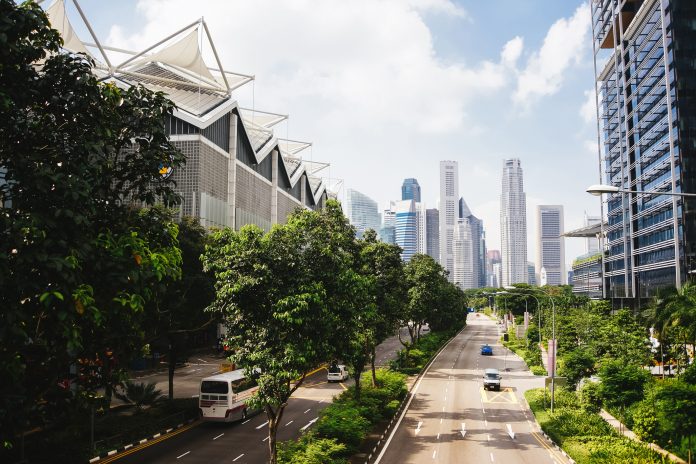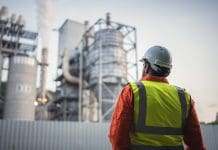Professor Tim Ibell, chair of the judges for the Structural Awards 2021 and past president, IStructE, looks at the winning projects from around the world that highlight outstanding sustainable structural design
The Structural Awards 2021 programme not only showcased some of the finest examples of engineering worldwide; it also served as a great platform to demonstrate how the profession is embracing sustainable design and aiming for net zero 2050.
Two particular projects, the UK’s York House and the Oregon Forest Science Complex in the USA represent excellent examples of zero carbon ambition.
Taking York House first, this was a breathtaking project with intelligent and sustainable structural design at its heart. An eight-storey refurb and extension scheme in the heart of London, it gave a previously deteriorated building a new lease of life.
This was achieved by adopting one of the most important and essential approaches to modern, circular construction: reusing and repurposing existing assets, including the existing structure for support, air circulation systems and other previously integrated facilities.
Furthermore, the existing foundations were justified for the additional weight of the extension. This delivered low waste and maximum efficiency, with minimal intervention.
Reducing cost and carbon
Other instances of the structural engineers’ influence on the overarching sustainability requirements were in developing a solution where York House’s feature extension could be built in engineered timber, providing a robust but green structure. By exposing the timber internally, they were also able to reduce the amount of finish required, reducing cost and carbon.
It’s a best-in-class example of how structural engineers have a key role to play in reducing carbon emissions in construction and really highlights what’s possible when sustainability is put at the top of the brief.
Oregon Forest Science Complex
In turn, the Oregon Forest Science Complex, part of Oregon State University, presents another exceptional example of how using green structural materials can reduce a building’s carbon footprint. In particular, it showcases how timber has earned its rightful place among high-tech construction materials, offering a low-carbon alternative to more traditional, high-performance systems.
The complex also demonstrates timber’s unique properties when deployed in an area of high seismic activity as the material’s low weight helps to reduce seismic forces and stress on the building. Structural robustness, sustainably sourced. Just what we need.
Race to net zero
Two projects which I believe structural engineers, and other construction professionals worldwide, should take note of, particularly following last year’s landmark COP 26 conference. Following this global event, the race is now on for net zero, rapidly followed by regenerative design principles such that our profession doesn’t merely do less harm but does good.
Approaching this from a top-level perspective, we urgently need to adopt a more circular and imaginative approach towards the built environment, from the smallest dwelling to the largest piece of infrastructure. Fundamentally, we need to use less “stuff” in our buildings.
This includes drastically reducing the excavating of virgin raw materials and producing carbon intensive ones. Although product manufacturers have their role to play in this substantial task, specifiers also have a key role to play in driving emissions down.
Climate Emergency Task Group
It’s something my peers at the Institution of Structural Engineers have as a key priority. There is already an expectation across the board that our members need to prioritise sustainable construction as much as core fundamentals, like structural safety and integrity. The IStructE recently announced updates to its routes to becoming professionally qualified, which have raised the level of testing of attitudes and skills concerning sustainable structural design.
Will Arnold, who leads the charge in IStructE for sustainable design, puts our expectations succinctly: “To fail to act now is to ignore the requirements of the institution with which we are affiliated. Our potential professional impact on the climate crisis far outweighs our potential impact at home – and it is our duty as professional engineers to start acting today.”
Over two years ago, IStructE established a dedicated Climate Emergency Task Group. Gathering together some of the most creative and sustainability-focused minds in our profession, it has led the way in the industry by creating free sustainability guidance for members and non-members alike, and pioneering on initiatives such as the Structural Carbon Tool, and the proposed Part Z amendments to the Building Regulations.
Carbon as a skill
Looking ahead to this year, the focus will be on strengthening carbon as a core skill in the engineer’s toolkit, broadening the knowledge base to encompass wider aspects of sustainability and influencing other industries with whom structural engineers engage.
Structural engineers have extraordinary skills to offer holistically in sustainable design and we are determined that this skillset is exploited by clients, users, developers and all professions relate to construction. Coming back to the Structural Awards, which will be entering their 54th iteration this year, the focus in 2022 will move away from the longest, tallest or most slender. These measures are simply no longer appropriate, bluntly.
Instead, the Structural Awards will look for excellence in structural design associated with Planet, People, Process and Profession. We will look for outstanding contributions which are holistic in outlook, with “Planet” being a key driver for a new baseline requirement. Change is all around us, and IStructE is embracing and driving change, something we are all very proud of.
Professor Tim Ibell
Chair of judges
IStructE Structural Awards 2021
Tel: +44 (0)20 7235 4535





![[VIDEO] Re-flow Field Management review by Traffic Management Installations When TMI began subcontracting for councils and government bodies, they wanted to present their site reporting in a more professional manner](https://www.pbctoday.co.uk/news/wp-content/uploads/2025/03/TMI-Media-1-218x150.png)


![[VIDEO]Self-climbing robot Schindler RISE used to install lifts on Skanska site Skanska's all-electric 105 Victoria Street development in central London is seeing the first UK use of Schindler's Robotic Installation System for Elevators (Schindler RISE)](https://www.pbctoday.co.uk/news/wp-content/uploads/2025/03/schindler-rise-hoistway-fixation-218x150.jpg)





